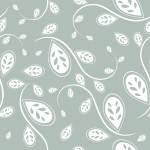Boxwood & Brass
72:53
Resonus RES10177
Music by Baermann, Crusell, J. Stamitz & Tausch
[dropcap]C[/dropcap]omprising two clarinets, bassoon and two horns the period ensemble Boxwood & Brass does very much what it says on the tin. Exploring the music of Franz Tausch is a project which is long overdue. Tausch’s frighteningly virtuosic music for his own instrument, the clarinet, was often cited in books on the early clarinet, sometimes with a degree of skepticism as to whether it could ever actually have been played, and his seminal role as the teacher of the next generation of virtuosi: Heinrich Baermann, Bernard Crussell and possibly Spohr’s clarinettist, Johann Hermstedt. Taught clarinet by his clarinettist father Jacob at the court of Mannheim, Franz Tausch may have played the clarinet concerti of Johann and Karl Stamitz, and indeed it is chamber music by the former, his attractive Three Quartets for clarinets and horns, which provides some of the context in this programme. The exquisite Adagio from Heinrich Baermann’s clarinet quintet, ingeniously arranged for clarinets and horns, is also given a airing, while Crusell’s virtuosic Concert-Trio for clarinet, horn and bassoon is also give a welcome performance.
Perhaps surprisingly in light of the fiery concertos he has left us, it turns out that Tausch’s chamber music is relatively tame, almost conventional, but with occasional unexpected twists of harmony confirming that this is very much ‘romantic’ music. The performances by Boxwood & Brass of this little-explored repertoire are beautifully prepared and executed, with a polished tone from both clarinettists and an authoritative and focused contribution from horns and bassoon. Perhaps reflecting their conceit of a salon recital, the acoustic is quite intimate, but undoubtedly highly appropriate for this charming repertoire. While this CD makes a valuable contribution to our wider understanding of an important aspect of the history of the clarinet, it also provides a very entertaining and rewarding listening experience for the general listener.
D. James Ross
[iframe style=”width:120px;height:240px;” marginwidth=”0″ marginheight=”0″ scrolling=”no” frameborder=”0″ src=”//ws-eu.amazon-adsystem.com/widgets/q?ServiceVersion=20070822&OneJS=1&Operation=GetAdHtml&MarketPlace=GB&source=ss&ref=as_ss_li_til&ad_type=product_link&tracking_id=infocentral-21&marketplace=amazon®ion=GB&placement=B01M73SB9Z&asins=B01M73SB9Z&linkId=bd9073fc9f314cb1b8ada7e906b7889b&show_border=true&link_opens_in_new_window=true”]
[iframe style=”width:120px;height:240px;” marginwidth=”0″ marginheight=”0″ scrolling=”no” frameborder=”0″ src=”//ws-eu.amazon-adsystem.com/widgets/q?ServiceVersion=20070822&OneJS=1&Operation=GetAdHtml&MarketPlace=DE&source=ss&ref=as_ss_li_til&ad_type=product_link&tracking_id=earlymusicrev-21&marketplace=amazon®ion=DE&placement=B01M73SB9Z&asins=B01M73SB9Z&linkId=9db8d9f32b0647ba713d9438c6164749&show_border=true&link_opens_in_new_window=true”]
[iframe style=”width:120px;height:240px;” marginwidth=”0″ marginheight=”0″ scrolling=”no” frameborder=”0″ src=”//ws-na.amazon-adsystem.com/widgets/q?ServiceVersion=20070822&OneJS=1&Operation=GetAdHtml&MarketPlace=US&source=ss&ref=as_ss_li_til&ad_type=product_link&tracking_id=earlymusicrev-20&marketplace=amazon®ion=US&placement=B01M73SB9Z&asins=B01M73SB9Z&linkId=2451f724c543f3a60ff90d533c940f94&show_border=true&link_opens_in_new_window=true”]

